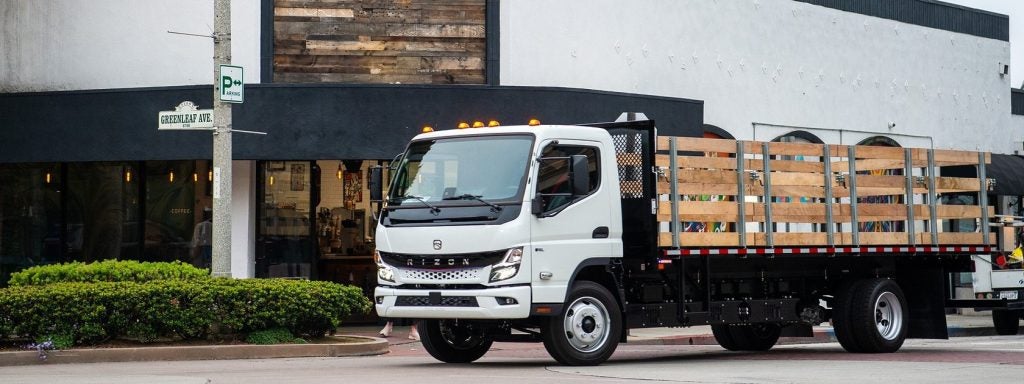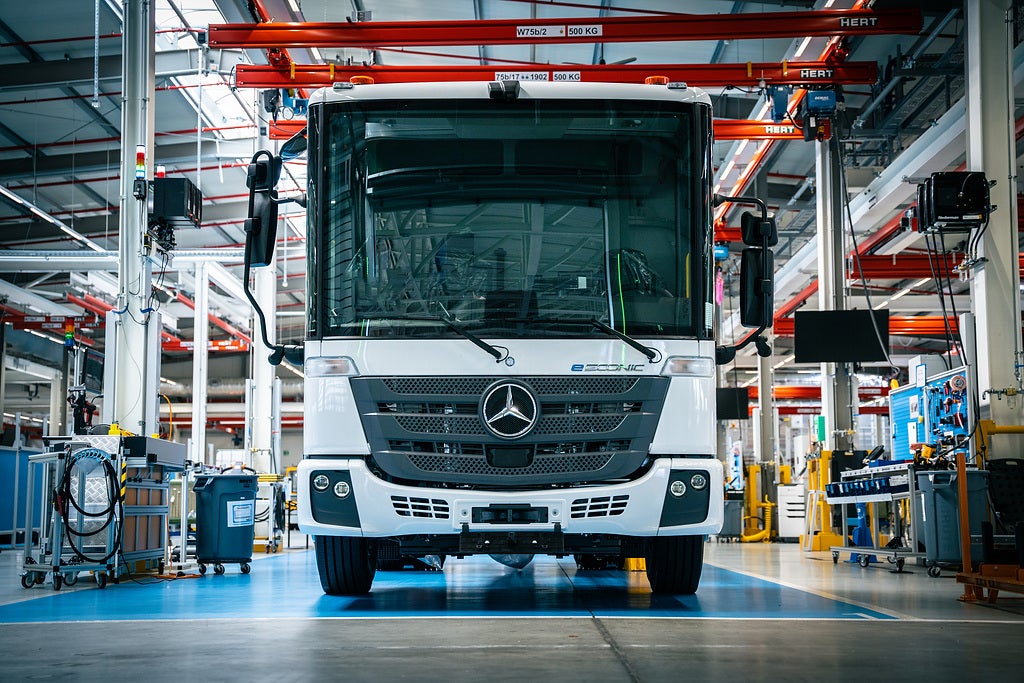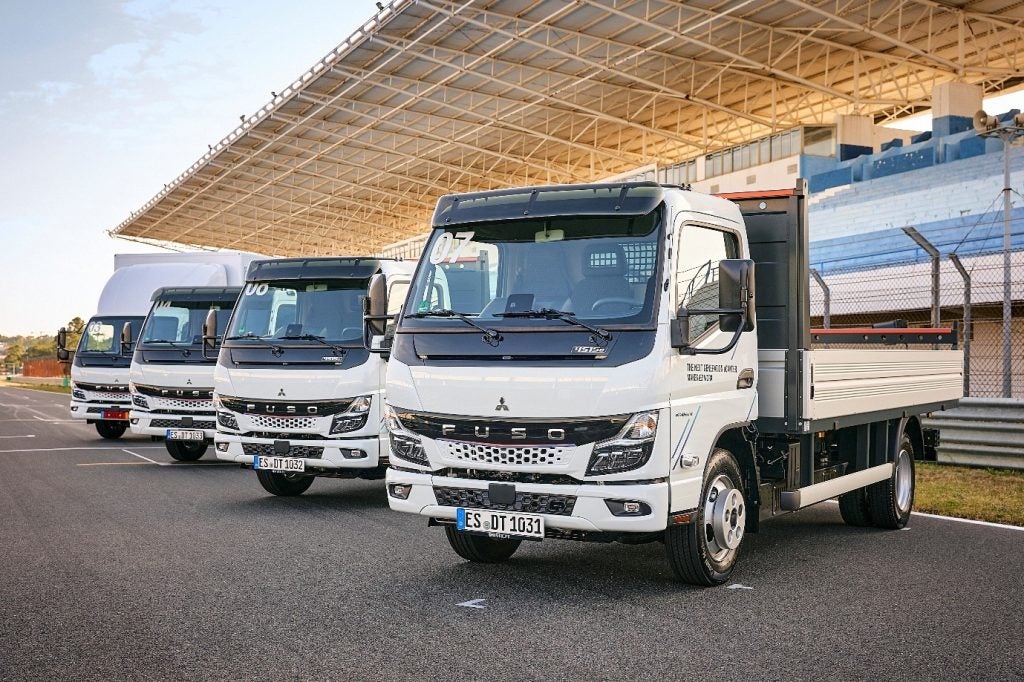Despite presenting fairly solid Q1 2016 performance data on 22 April, and forecasts for the full year for unit sales "slightly below the level of the previous year" and EBIT "at the prior-year" level, Daimler Trucks has now, just less than one month later, acknowledged that these predictions were overly-optimistic.
Based on the new general premise that "the world's major truck markets are in a period of sustained contraction," with specific reference to darkening market trends in some particular regions and countries, Daimler Trucks is now viewing 2016 as a year when unit sales and EBIT from ongoing business will be "significantly lower" than in 2015. Of some concern must be the view that: "In recent weeks, the situation in major markets has changed significantly."
In 2015, it reported unit sales of 502,478 units, ahead 6,810 units, or 1.4% on 2014's 495,668, generating revenue of EUR37.58bn (EUR32.39bn: +16.0%). This growth helped drive 2015 EBIT from ongoing business to a record EUR2.74bn (margin of 7.3%), versus EUR2.07bn (6.4%) in the previous year.
In Q1 2016, unit sales totalled 105,664, versus 112,424, a year-on-year drop of 6.0%, with revenue easing 2.5% to EUR8.20bn from EUR8.41bn. Although reported EBIT improved to EUR516m (margin of 6.3%) from EUR472m (5.6%), a gain of 9.3%, EBIT from ongoing business, which backs out the impact of special items, declined to EUR517m (6.3%) from EUR536m (6.4%).
Daimler Trucks did allow some caution to accompany its previous 2016 forecasts, noting in its Q1 2016 statements that: "Demand for medium- and heavy-duty trucks in the regions relevant for Daimler should be slightly below the prior-year volume" and more specifically noted "in the North American truck market, the gradual weakening of the industrial sector is likely to have an impact." However, it is now clear, admittedly with the gift of hindsight, that the overall outlook probably failed to acknowledge the true extent of mounting market challenges, some of which were evident in incoming order data for the closing quarters of 2015 and, especially, in Q1 2016.
These data pointed to a significant order downturn from Q3 2015 onwards, the July-December 2015 total of 224,663, being some 67,166 units, or 23.0%, shy of the 291,829 total seen in the same period of the previous year. In Q1 2016, incoming orders totalled 98,583 units, versus Q1 2015's 134,148, a drop of 26.5%. The source(s) of these dwindling orders was/is also pretty clear. For example, NAFTA orders in Q4 2015 tumbled 51.3% year-on-year, to 41,577, with US orders alone falling 52.9%. In Q1 2016, NAFTA orders totalled 29,378, against 52,343, a further year-on-year decline of 43.9%, with US orders alone of 21,134, down 55.9%. Similar weak order data were evident for Latin America, primarily Brazil, Indonesia and the rest of the world (which encompasses the Middle East).
How well do you really know your competitors?
Access the most comprehensive Company Profiles on the market, powered by GlobalData. Save hours of research. Gain competitive edge.

Thank you!
Your download email will arrive shortly
Not ready to buy yet? Download a free sample
We are confident about the unique quality of our Company Profiles. However, we want you to make the most beneficial decision for your business, so we offer a free sample that you can download by submitting the below form
By GlobalDataThe upshot is that Daimler Trucks' chief Wolfgang Bernhard now believes: "The situation of global truck markets has been challenging for several months and has recently got worse. Especially in the NAFTA region, but also in the Middle East, demand is weaker than previously expected."
With regards to conditions in North America, Daimler Trucks has noted that although it is defending its "clear market leadership with its strong product portfolio," at the same time it acknowledges "there has been no revival of orders received, especially in the heavy-duty segment (Class 8)." The result is that the overall market for Class 6 to 8 trucks is now expected to contract by approximately 15% in 2016, up from the previous forecast fall (made in mid-April 2016) of approximately 10%. The company has recently made a significant cut to output at its DTNA assembly plant in Cleveland and reduced employment at its PDI facility in Rowan County, South Carolina, idling over 900 workers in the process, and further cutbacks at these locations and the DTNA manufacturing plants in Portland, Oregon and Mount Holly, North Carolina surely cannot be ruled out.
Continuing demand weakness in Brazil (and Turkey and Indonesia), where "the outlook for those markets has been worsening since the beginning of the year and continues to worsen," has been well documented but remains a major concern. Daimler Trucks, along with the other major truck players in Brazil – including Volvo, Scania, MAN (Latin America) and Paccar (DAF), have been giving dire warnings of poor conditions for many recent quarters but Daimler has again cautioned, "the Brazilian market will contract by about 20% [in 2016], now that the political and thus also economic situation there has deteriorated once again," adding, "further workforce adjustments will have to be made, for which Daimler Trucks has made a voluntary severance offer. In this context, Daimler Trucks anticipates expenses totalling up to EUR100m as a special reporting item in 2016."
Even in Europe, where truck demand remains relatively robust, Daimler Trucks has noted, somewhat ominously for itself and for its other major market competitors: "Although demand in Europe is significantly higher than last year, the competitive situation has become much more intense and is influencing market players' pricing." In mid-April, the company noted: "The European market so far seems to be fairly unaffected by the uncertain development of the world economy and should continue its recovery with growth in the region of 5% this year." Incoming orders for Daimler in Europe continued to rise on a year-on-year basis through every quarter in 2015 and this continued in Q1 2016, when EU30 orders totalled 20,736, versus 20,191 in Q1 2015, albeit a rise of just 2.7%.
Perhaps unsurprisingly, Daimler's Bernhard has still managed to put a somewhat positive spin on this increasingly gloomy outlook, noting: "Although the forecast is for lower numbers than in 2015, we continue to anticipate a high level of earnings in the full year. 2016 will be one of Daimler Trucks' most profitable years, due not least to the successful continuation of our efficiency actions." He also added: "Along with managing volatile truck markets, we continue to pursue our strategy systematically. With our technologically leading position, global presence and intelligent platform concepts, we will take further determined measures also in the future."
The major medium-term performance targets for Daimler Trucks – namely unit sales of 200,000 in 2020 and a return on sales of 8% across the business cycle – remain intact, the company noting in its new outlook "nothing has changed with regard to the medium- and long-term growth drivers and success factors for the key markets of Daimler Trucks."
Despite this positive spin, the changed outlook, while perhaps predictable, gives cause for concerns, not just for Daimler but also its major truck OEM peers in Europe and North America. Short-term market conditions in Europe will increasingly hold the key to near-term capacity utilization, units sales and revenue and earnings performance. While truck sales volumes across most of Europe appear to be holding up, hints of intensifying competition, which will increase fears of more disorderly pricing behaviour, are a clear concern.







